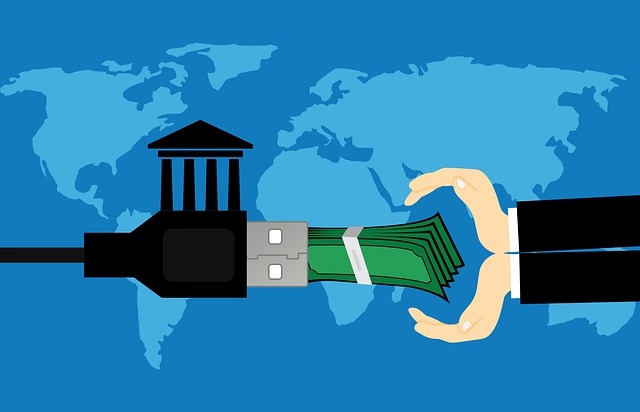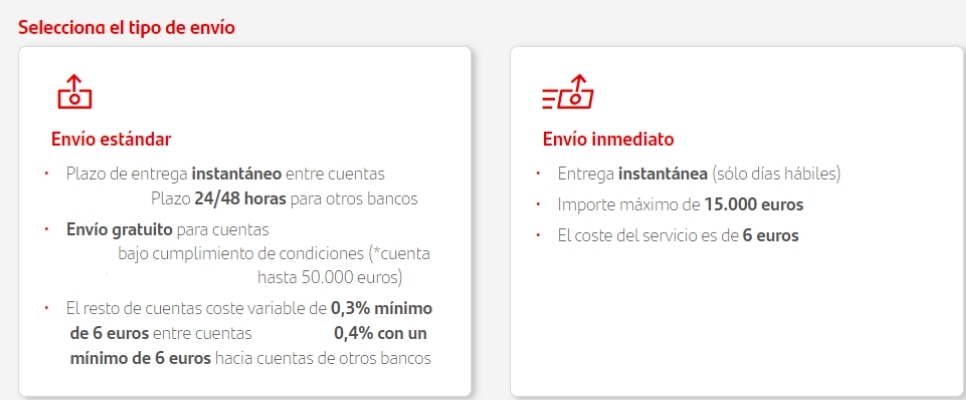Bank Transfer: What Should We Know?

A Transfer is an operation by which the holder or authorized person of an account (origin account) instructs to transfer funds from it to another person's account (destination account), which can be within the same institution or to a different one.
Let's make a parenthesis here to explain the difference between holder and authorized person. The holder is the "owner" of the account and can decide, among other things, to include or remove one or more authorized persons. The latter can only perform ordinary operations such as deposits, withdrawals, and transfers. If more than one holder is included in the account opening, it must be understood that all of them will be owners for tax and inheritance purposes.
Sometimes the terms transfer and transfer are confused. The transfer is the movement of funds that we make between our own accounts, whether we are holders or authorized persons, within the same institution.
What are the costs?
There are three possibilities for sharing the costs of a transfer:
SHA: Costs are shared, the originator bears the costs charged by their institution, and the beneficiary incurs those charged by their institution.
OUR: The originator pays all the costs.
BEN: The beneficiary bears the costs.
Are there any fees for making a transfer from Inversa to our bank account?
No. Inversa has contracted the services of Paymático as a money custody account and as a payment gateway, and it is the platform itself that covers the expenses that may arise.
Conversely, when the customer orders funds to be deposited in Inversa (Paymático), and this generates a cost, it is not Inversa that is responsible but their own bank is charging them a commission for this management.
How long does it usually take? It will depend on the type of transfer:
According to the definition of the Bank of Spain:
*SEPA Transfer.
SEPA is the area composed of the European Union (EU) member states and six more countries (Iceland, Liechtenstein, Monaco, Norway, San Marino, and Switzerland).
Among its advantages is that payments in euros can be made and received under the same conditions within this area, regardless of whether they are cross-border or not.
Ordinary transfers generally take 1 or 2 business days. If you are in a "SEPA" country and order a payment to an account in a bank in another state of the SEPA area, your money will arrive no later than the next business day after the receiving bank received the funds. If the transfer order was given on paper, the period may be delayed by one day more. If we are talking about an internal transfer within the same bank, it will be processed on the same day.
Each entity will apply certain conditions that will vary depending on the type of account, contracted products, etc. Therefore, to avoid unpleasant surprises, it is important that we know them before making a transfer.
We will use those of any entity as an example:

Urgent transfers: They are usually credited to the recipient's account on the same day and will have a higher cost. OMF transfers (Order of Movement of Funds) or urgent transfers have the peculiarity that the transfer will be credited to the indicated account on the same day the operation is carried out. Another particularity of OMF transfers is that they are carried out through the Bank of Spain.
Regarding costs, they must be shared between the originator and the beneficiary (SHA), meaning that the entity where I order the transfer will charge me for its expenses, and the beneficiary's entity will charge them for theirs.
*International Transfer:
If the countries where the originator and the beneficiary of the transfer are located are in the SEPA area, they should have the same costs as domestic payments.
If a correspondent bank is involved, the originator's entity must inform its client of the possibility that it may incur its own expenses.
If the IBAN is used, which since 2014 identifies bank accounts worldwide in a standardized way, and the BIC (SWIFT, for sending secure and standardized messages in which economic transfers are made) are considered STP transfers (Straight Through Processing) that are carried out automatically and are faster and cheaper.
At this point, it should be noted that the Blockchain system could be a serious competitor for the SWIFT system. Thanks to this technology, transfers can be made from the mobile app without fees, being immediate or within a maximum period of two days.
In the case of cross-border transfers, the arrival times of the funds to the destination account may increase (especially if the origin or destination is outside the European Union).
As an example, let's again use the same entity as an example, making it clear that these conditions are not the same for all. Nevertheless, it serves as a reference to give us an idea:

In November 2017, the European Central Bank took a big step towards financial integration in the euro area: the establishment of the TIPS system. TIPS, or Target Instant Payment Settlement, is a new automatic way of making transfers that eliminates intermediaries. Euros flow from one account to another through a common fund in which all entities have previously deposited money. It is the instant transfer service with which we can send up to €15,000 from one account to another in less than 20 seconds. The cost will depend on the entity we operate with.
As for the data to be filled in, we will have to select:
-Origin account, from which we are going to send funds.
-Recipient, beneficiary: Holder and Account Number.
In Inversa, the recipient is the client themselves, that is, they transfer money from one of their accounts to another of their own in Paymático. For example:
Maria has just opened an account in Paymático as a client of Inversa to make an investment and orders to transfer €5,000 from her bank as the originator to her Paymático account as the recipient.
-Concept: This field is not mandatory, but depending on the purpose of the transfer, it may be necessary, for example, if it is the payment of some legal procedure, a community fee, a property purchase, etc.
In the specific case of Inversa, it is essential to correctly enter the concept that appears for each client because it uniquely identifies them in Paymático. The concept will be INVERSA XWX followed by a unique numerical code for each holder. It is important to enter it exactly without adding anything else, respecting the uppercase and spaces.
- Choose whether it will be one-time or periodic when we want it to be automatically repeated within a specified period of time.
-If it is international, we will have to choose the Country, and if it is outside the SEPA territory, we must also specify the currency.
Technology and new devices have transformed the financial system and will undoubtedly shape the future. In this sense, it must be said that already today the conditions vary considerably if the client's transactions are made online, reducing the costs of the same and sometimes offering a faster service. Again, it will depend on each entity, so we should always compare to choose the best service.
On the part of Inversa, to achieve greater agility and customer satisfaction, we are already working to be able to operate in the near future through a virtual IBAN.
Si quieres contribuir en el blog de Inversa como experto hazte socio del conocimiento.



